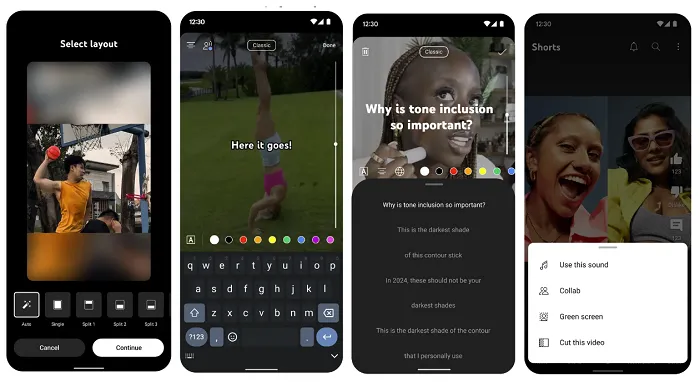How to Maximize Email Engagement: 12 Effective Ways to Segment Your List
Introduction
Effective email marketing relies on engaging with your audience in a personalized way. One of the best ways to achieve this is by segmenting your email list. By dividing your subscribers into smaller groups based on specific criteria, you can send more targeted and relevant content to each segment, increasing the chances of engagement and conversion. In this article, we will discuss 12 effective ways to segment your email list for maximum engagement.
1. Demographics
Segmenting your email list by demographics such as age, gender, location, and income level can help you tailor your content to better suit the needs and interests of each group. For example, a clothing retailer may want to send different promotions to male and female subscribers, or offer location-specific discounts to subscribers in different regions.
2. Behavior
By tracking how subscribers interact with your emails and website, you can create segments based on their behavior. For example, you can group together subscribers who have clicked on a specific link or made a purchase in the past. This allows you to send targeted follow-up emails or recommendations based on their previous actions.
3. Engagement Level
Segmenting your list based on engagement level can help you identify inactive subscribers who may need reengagement campaigns or special offers to keep them interested. By targeting these subscribers separately from your most engaged users, you can optimize your email strategy for maximum effectiveness.
4. Purchase History
Dividing your list by purchase history allows you to send personalized product recommendations, reorder reminders, or exclusive discounts to subscribers based on their past purchases. This can help drive repeat business and increase customer loyalty.
5. Interests
Understanding your subscribers‘ interests and preferences can help you create highly targeted campaigns that resonate with them on a personal level. By segmenting your list by interest categories or product preferences, you can deliver content that is relevant and engaging to each individual subscriber.
6. Email Engagement
Segmenting your list based on email engagement metrics such as open rates, click-through rates, and conversion rates can help you identify which subscribers are most responsive to your emails. This allows you to tailor your content and send frequency to each segment to maximize engagement and drive results.
7. Lifecycle Stage
Dividing your list by lifecycle stage, such as new subscribers, active customers, or lapsed customers, allows you to send targeted campaigns that are relevant to each stage of the customer journey. This helps you nurture leads, retain customers, and win back lost business more effectively.
8. Customer Feedback
Segmenting your list based on customer feedback or survey responses can help you identify trends and preferences among your subscribers. By sending targeted follow-up emails or promotions based on this feedback, you can show your subscribers that you value their opinions and improve customer satisfaction.
9. Website Activity
Tracking subscribers‘ website activity can provide valuable insights into their interests and preferences. By segmenting your list based on pages visited, products viewed, or actions taken on your website, you can send targeted content that is highly relevant and engaging to each individual subscriber.
10. Subscription Source
Dividing your list based on how subscribers opted in, such as through a newsletter sign-up, a product purchase, or a webinar registration, can help you tailor your messaging to match their original intent. This can improve engagement and conversion rates by delivering content that aligns with subscribers‘ interests and expectations.
11. Email Preferences
Allowing subscribers to choose their email preferences, such as frequency or content topics, can help you segment your list automatically based on their selections. By respecting their preferences and sending only the content they are interested in, you can improve engagement and reduce unsubscribe rates.
12. Lead Score
Assigning lead scores to subscribers based on their interactions with your emails, website, or other marketing channels can help you prioritize your leads and focus your efforts on the most promising opportunities. By segmenting your list by lead score, you can tailor your messaging and offers to each segment for maximum impact.
Conclusion
Segmenting your email list is a powerful strategy for maximizing engagement and driving results in your email marketing campaigns. By dividing your subscribers into smaller, targeted segments based on specific criteria such as demographics, behavior, engagement level, and more, you can deliver personalized content that resonates with each individual subscriber. This increases the chances of engagement, conversion, and customer satisfaction, ultimately leading to a stronger and more successful email marketing strategy.
FAQs
1. How do I start segmenting my email list?
To start segmenting your email list, begin by defining the criteria that are most relevant to your business and audience. This could include demographics, behavior, engagement level, and other factors that impact your email marketing strategy. Use email marketing software or CRM tools to create segments based on these criteria and start sending targeted campaigns to each segment.
2. How often should I update my segments?
It is best practice to regularly review and update your segments to ensure they remain relevant and effective. Depending on your business and audience, you may need to update your segments weekly, monthly, or quarterly to account for changes in behavior, preferences, or other factors that impact your email marketing strategy.
3. What are the benefits of segmenting my email list?
Segmenting your email list offers numerous benefits, including improved engagement, higher conversion rates, increased customer satisfaction, and stronger loyalty. By sending targeted content that resonates with each segment of your audience, you can drive results and achieve your email marketing goals more effectively.




